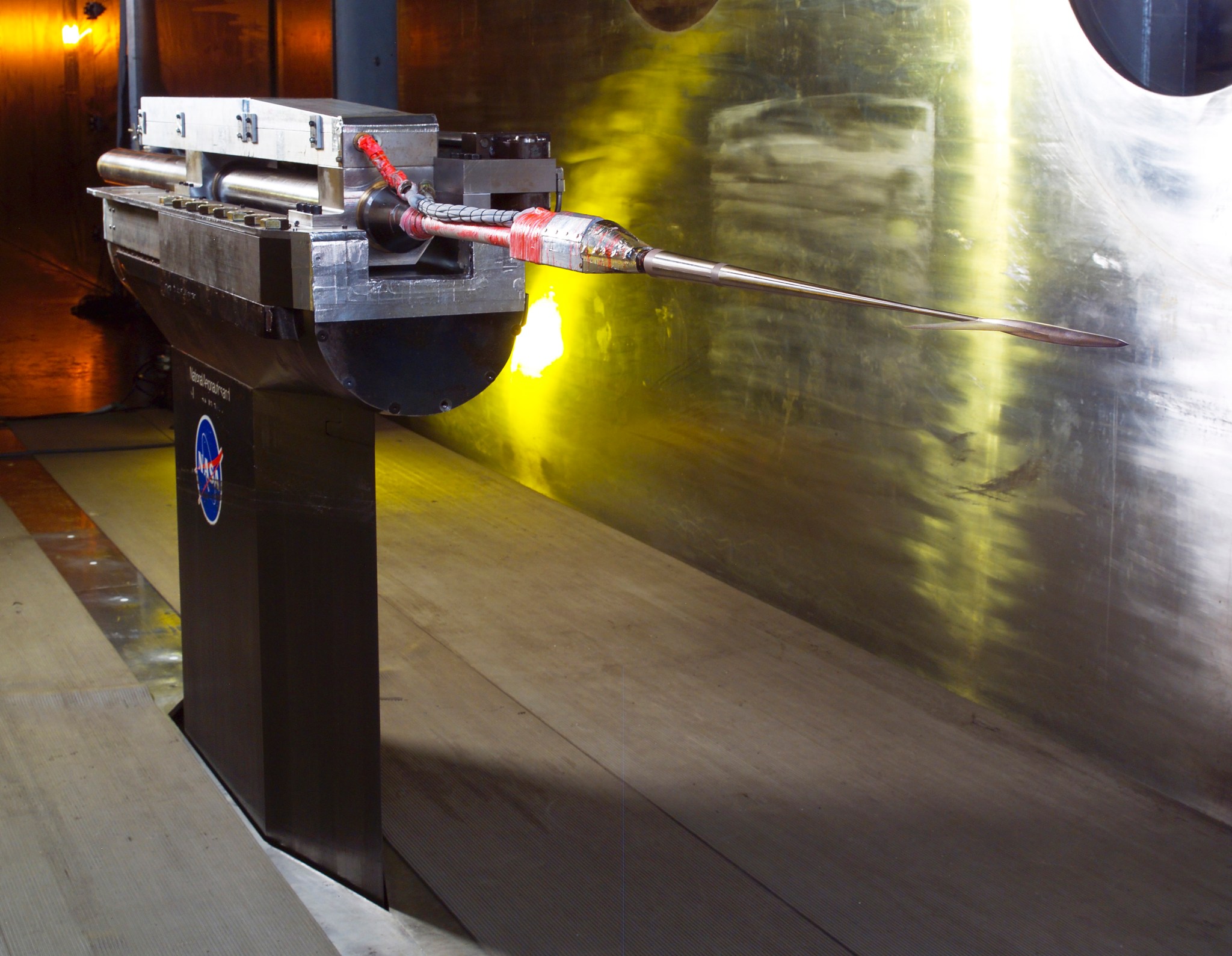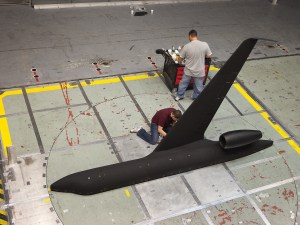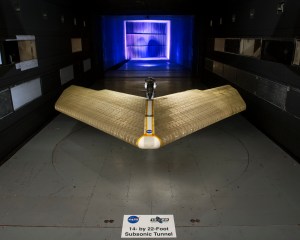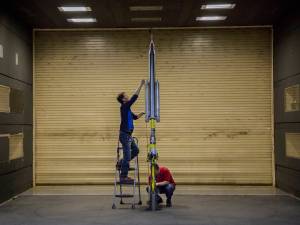Throughout its history, the 10×10 Foot Supersonic Wind Tunnel (10×10 SWT) has made valuable contributions to the advancement of fundamental supersonic-propulsion technology. The 10×10 was brought on line under the leadership of Dr. Abe Silverstein, who was responsible for the Mercury program and named the Apollo program, laying the groundwork for landing a man on the moon. Researchers have used the facility to aid in the development of the Atlas-Centaur, Saturn and Atlas-Agena-class launch vehicles, and for such vehicle-focused research programs as the High-Speed Civil Transport, the National Aerospace Plane and the Joint Strike Fighter.
The test section is voluminous enough to accommodate large-scale models and full-size aircraft constituents. The 10×10 was specifically designed to test such supersonic propulsion components as inlets, nozzles and full-scale jet and rocket engines. In its aerodynamic cycle, the facility can operate as a closed-loop system or, in its propulsion cycle, as an open-loop system capable of reaching test-section speeds in excess of Mach 3.5. Gust and Mach plates can be installed to expand local Mach-number conditions. There is also continuous operation across the entire speed and altitude regime, offering users greater flexibility and productivity during testing.
In the propulsion cycle, the tunnel operates by continuously drawing outside air through a very large dryer to remove moisture and expel it externally into the ambient atmosphere. This mode is used for models that introduce contaminants into the air stream; or use potentially explosive gas mixtures; or when the air heater is used to simulate flight temperatures. During the aerodynamic cycle, the tunnel runs as a variable-density facility that can simulate a variety of pressures at altitudes ranging from 50,000 to 154,000 feet. Dry air is added as needed to maintain test conditions.
10- by 10-Foot Supersonic Wind Tunnel Fact Sheet

































